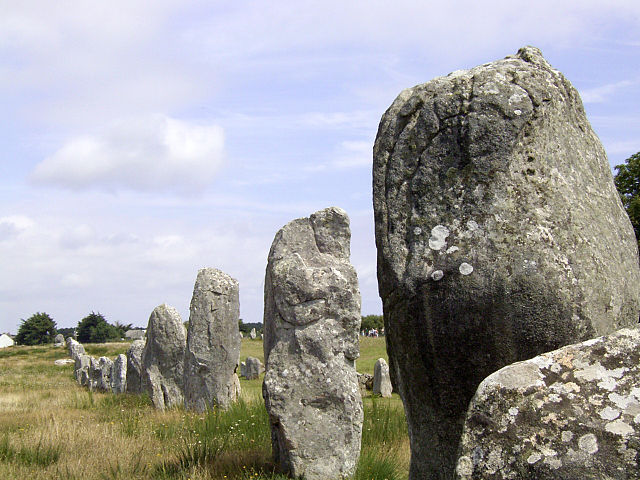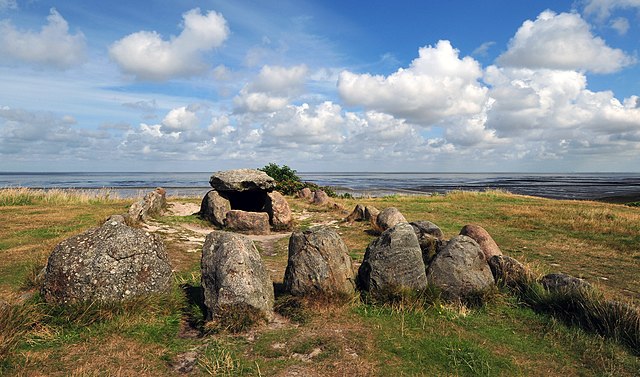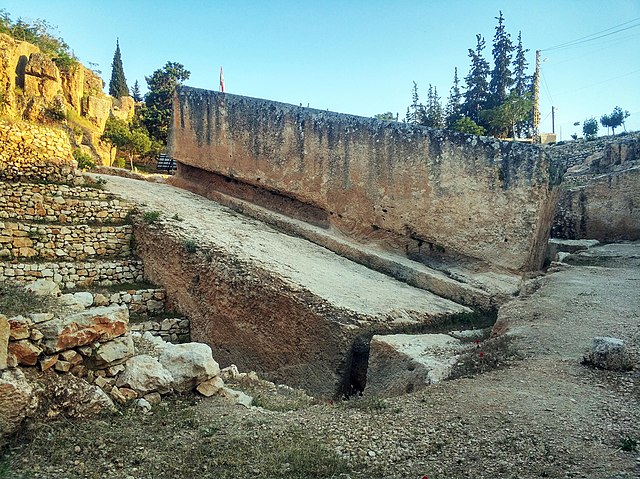The Carnac stones are an exceptionally dense collection of megalithic sites near the south coast of Brittany in northwestern France, consisting of stone alignments (rows), dolmens, tumuli and single menhirs. More than 3,000 prehistoric standing stones were hewn from local granite and erected by the pre-Celtic people of Brittany and form the largest such collection in the world. Most of the stones are within the Breton municipality of Carnac, but some to the east are within neighboring La Trinité-sur-Mer. The stones were erected at some stage during the Neolithic period, probably around 3300 BC, but some may date to as early as 4500 BC.
The Ménec alignments, the best-known megalithic site among the Carnac stones
Stones in the Kerlescan alignments
Megalithic alignments at Carnac
Le Menec alignments.
A megalith is a large stone that has been used to construct a prehistoric structure or monument, either alone or together with other stones. There are over 35,000 in Europe alone, located widely from Sweden to the Mediterranean sea.
Dolmen at Ganghwa Island, South Korea (c. 300 BC)
Megalithic Batu Brak in Batu Brak District, West Lampung Regency, Lampung Province, Indonesia (c. 2100 BC)
Megalithic grave Harhoog in Keitum, Sylt, Germany (c. 3000 BC)
The largest megalith of the ancient world, found in Baalbek, Lebanon, was quarried during the Roman Empire








